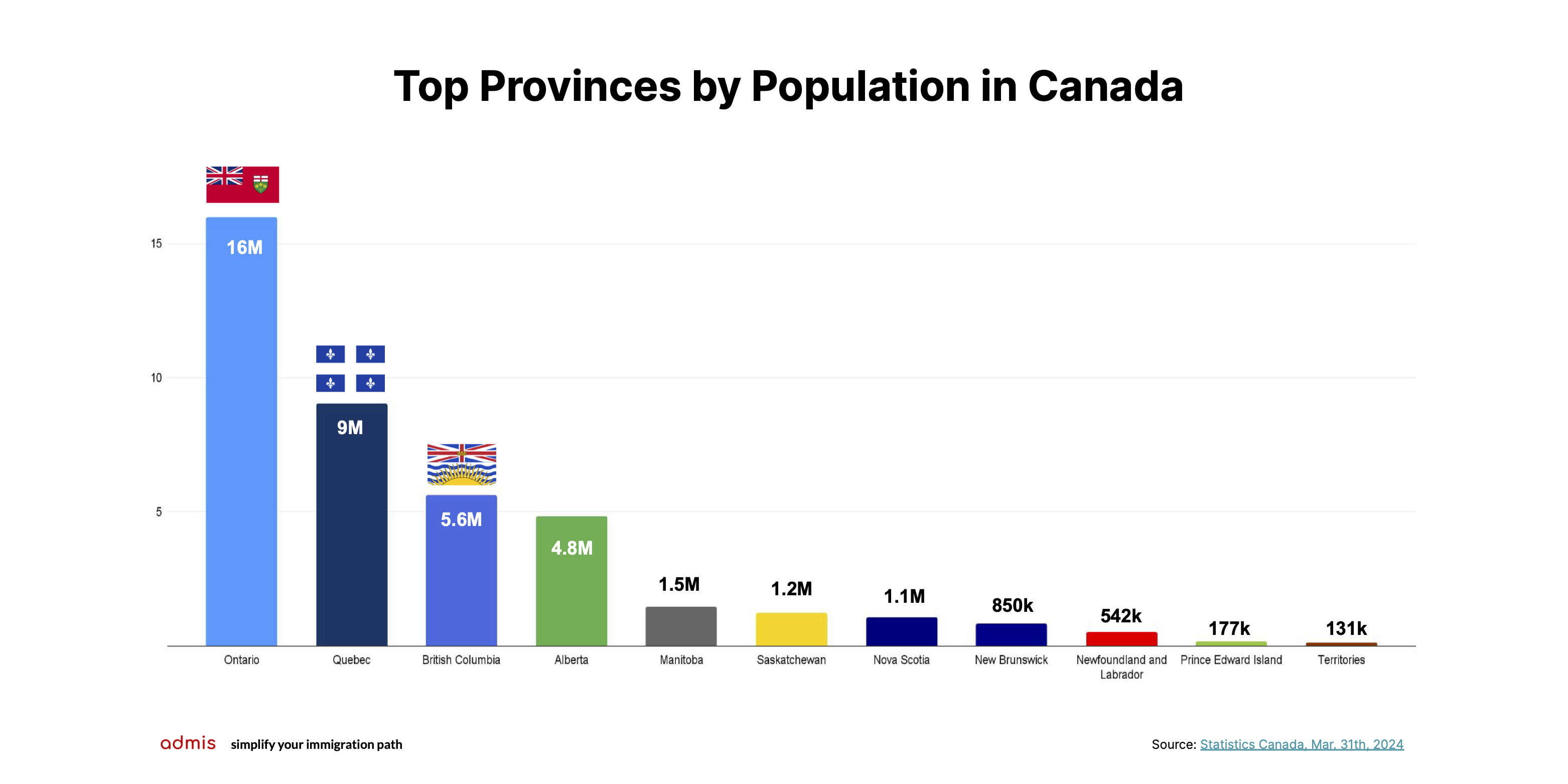Canada in 5: Immigration Fuels Canada's 41M Population Boom

This edition explores Canada's unprecedented population growth, surpassing 41 million, driven by record-high immigration levels. We also delve into the government's response to ensure sustainable growth, the shifting interprovincial migration trends, and the implications for immigrants amidst new temporary resident restrictions.
1. Top Story: Canada Hits 41 Million Residents as Immigration Drives Unprecedented Growth
According to Statistics Canada's live population tracker, Canada's population has surpassed the 41 million mark, just nine months after reaching 40 million. This rapid growth is primarily attributed to immigration, with certain provinces experiencing significant gains while others saw population declines.
Key Takeaways
- Canada's population surpassed 41 million, driven by record-high immigration levels. Between Jan. 1, 2023, and Jan. 1, 2024, the population grew by 3.2%.
- Alberta saw the largest interprovincial migration gain, while Ontario and British Columbia experienced significant losses.
- The Canadian government plans to set targets for temporary residents to ensure sustainable growth and address concerns about housing and infrastructure while recognizing immigration's importance to the economy and society.
Interprovincial Migration: Alberta Shines, Ontario Declines
Alberta emerged as the biggest winner in interprovincial migration, adding 55,107 people in 2023, the largest gain since 1972. This reverses the 2016-2021 trend when more people left than arrived. Nova Scotia, New Brunswick, and PEI also saw positive net migration, albeit lower than previous years.
Ontario lost 36,197 people to other regions in 2023, the biggest regional loss, following a similar 2022 trend. BC experienced negative net interprovincial migration for the first time since 2012, with most of the net loss attributed to people moving to Alberta.
Immigration Fuels Canada's Rapid Growth
Canada's population surged by 1,271,872 between Jan 1, 2023, and Jan 1, 2024, a 3.2% growth rate, the highest since 1957. Temporary immigration drove this growth, with 804,901 non-permanent residents added. Without it, growth would have been only 1.2%.
Permanent immigration also played a key role, with 471,771 permanent immigrants making Canada their home in 2023. The combination of temporary and permanent immigration has been the main catalyst for Canada's rapid population expansion.
Canada's Response to Rapid Growth
The Canadian government is taking action to ensure sustainable population growth and address concerns about housing and services. Immigration Minister Marc Miller announced plans to set targets for temporary residents, aiming to reduce their proportion from 6.2% to 5% by 2027.
These measures aim to alleviate pressure on housing and infrastructure while acknowledging immigration's crucial role in Canada's economy and society. The government seeks to strike a balance between sustainable growth and the benefits of immigration.
What this means for immigrants
The government's policy changes to limit temporary residents may significantly impact those seeking to study, work, or claim refugee status in Canada. However, the ongoing emphasis on permanent immigration indicates Canada's commitment to welcoming newcomers who wish to make the country their permanent home.
As Canada confronts the challenges of its population growth, it must strike a balance between sustainability and the needs of businesses reliant on foreign workers. Managing this situation will be crucial for the country's success while addressing concerns raised by the new restrictions on temporary residents.
2. New Brunswick's Focus: Reopening of the Francophone Immigration Program
New Brunswick's Francophone Immigration Program, aimed at attracting French-speaking immigrants, is once again accessible after a one-year hiatus. The government does not rule out future temporary closures based on the number of applications received, which worries some potential candidates. Eligibility criteria include speaking French, having a connection to the province, and conducting an in-person exploratory visit.
- Official languages: New Brunswick is the only officially bilingual province in Canada. In 2021, 31.8% of its population reported French as their first official language.
- Education: In 2021, 57.5% of New Brunswick's population aged 25 to 64 held a postsecondary certificate, diploma, or degree.:
- Economy: The GDP reached $33.2b in 2023 and is projected to grow by 0.7% in 2024.
3. Success Snapshot: Immaculate N's Journey as a Global Citizen and International Leader
Vietnamese immigrant Nhung Tran-Davies is a family doctor in Alberta. She is renowned for her philanthropic work through the Children of Vietnam Benevolent Foundation and her efforts to support homeless children and refugees.![]()


